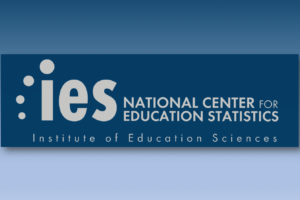Download US Department of Education’s Report: CONDITION OF EDUCATION 2017
 Condition of Education 2017
Condition of Education 2017
A Letter From the
Commissioner of the
National Center for Education Statistics
May 2017
On behalf of the National Center for Education Statistics, I am pleased to present e Condition of Education 2017, a congressionally mandated annual report summarizing the latest data on education in the United States. is report is designed to help policymakers and the public monitor educational progress. is year’s report includes 50 indicators on topics ranging from prekindergarten through postsecondary education, as well as labor force outcomes and international comparisons.
e Condition includes an At a Glance section, which allows readers to quickly make comparisons within and across indicators, and a Highlights section, which captures a key nding or set of ndings from each indicator. e report contains a Reader’s Guide, a Glossary, and a Guide to Data Sources that provide additional information to help place the indicators in context. In addition, each indicator references the data tables that were used to produce the indicator, most of which are in the Digest of Education Statistics.
In addition to the regularly updated annual indicators, this year’s report highlights innovative data collections and analyses from across the Center:
- e rst spotlight indicator examines the relationship between student risk factors at kindergarten entry (poverty and low parent educational attainment) and academic achievement in early elementary school. Drawing on data from the Center’s Early Childhood Longitudinal Study (ECLS-K:2011), the indicator nds that both risk factors are associated with lower academic achievement in reading, mathematics, and science in kindergarten through grade 3.
- e second spotlight indicator draws on administrative data from the Center’s EDFacts data collection and nds that 2.5 percent of students in U.S. public elementary and secondary schools were reported as homeless in 2014–15. e percentage of students reported as homeless ranged from 2.0 percent in suburban school districts to 2.4 percent in rural districts, 2.6 percent in town districts, and 3.7 percent in city districts.
- e third spotlight indicator draws on longitudinal data from the Beginning Postsecondary Students Study
to examine the rates at which rst-time college students persist toward completion of a degree or certi cate. Among rst-time college students in 2011–12, the percentage of students who were still enrolled or had graduated after 3 years was higher for students who began at 4-year institutions (80 percent) than for those who began at 2-year institutions (57 percent). - e fourth spotlight indicator examines how disability rates for U.S. adults vary by educational attainment, nding that 16 percent of 25- to 64-year-olds who had not completed high school had one or more disabilities in 2015, compared to 4 percent of those who had completed a bachelor’s degree and 3 percent of those who had completed a master’s or higher degree. Di erences in the employment and not-in-labor-force percentages between persons with and without disabilities are substantial, amounting to about 50 percentage points each. Among those who had obtained higher levels of education, the di erences were smaller.
- In addition, two indicators provide insights from the Center’s recent work on technology in education. e rst previews key ndings from the Center’s upcoming report, Student Access to Digital Learning Resources Outside
of the Classroom. For example, the percentage of students who use the Internet at home varied by parental education level in 2015, ranging from 42 percent for children whose parents had not completed high school to 71 percent for those whose parents had completed a bachelor’s or higher degree. e second presents ndings from the National Assessment of Educational Progress’s 8th-grade Technology and Engineering Literacy (TEL) assessment. For example, in 2014 female students scored higher than male students on the TEL assessment.
As new data are released throughout the year, indicators will be updated and made available on the Condition of Education website. In addition, the Center produces a wide range of reports and datasets designed to help inform policymakers and the public. For more information on our latest activities and releases, please visit us online or follow us on Twitter and Facebook.
Peggy G. Carr, Ph.D.
Acting Commissioner
National Center for Education Statistics







